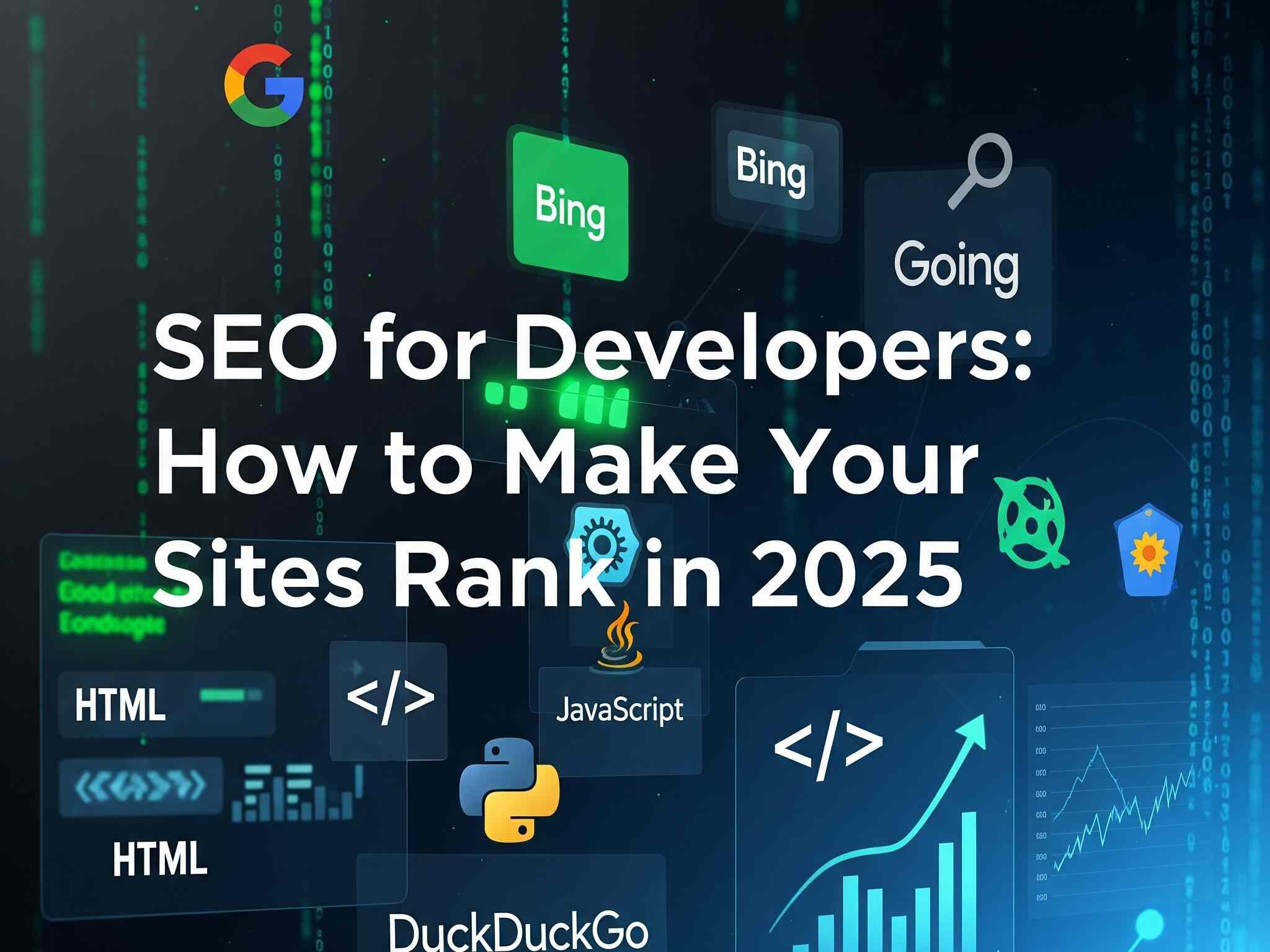
| Last Update | 06 Jul, 2025 |
| Created | 26 Jun, 2025 |
| Category | Educational Content |
| Total View | 9 |
| Tags | SEO For Developers 2025 Technical SEO Web Performance Site Structure Core Web Vitals Schema Markup Mobile-first Indexing SEO Best Practices |
In 2025, SEO isn’t just about keywords — it’s deeply tied to technical excellence, user experience, and content semantics. For developers, this means that understanding SEO is a crucial skill in building high-ranking and high-performing websites.
Introduction
Why Developers Need to Learn SEO
Core Web Vitals in 2025
Mobile-First Indexing
JavaScript SEO & Dynamic Rendering
URL Structure and Routing
Schema Markup and Structured Data
Server-side vs. Client-side Rendering
Page Speed Optimization Techniques
SEO-friendly HTML & Accessibility
Best Tools for SEO Optimization
Final Thoughts
SEO in 2025 is driven by technical performance, semantic understanding, and user-centric design. Developers must take ownership of their site’s SEO by implementing code-level best practices that align with search engine requirements.
SEO drives organic traffic
Google now evaluates performance at code level (LCP, CLS, INP)
Semantic HTML and accessibility affect rankings
Search engines rely on structured data, which developers control
Google’s latest vitals in 2025:
LCP (Largest Contentful Paint) – Should be under 2.5s
CLS (Cumulative Layout Shift) – Avoid layout jumps
INP (Interaction to Next Paint) – Replaced FID in 2024
✅ Use tools like PageSpeed Insights and Lighthouse.
Ensure responsive design with CSS Grid/Flexbox
Avoid hidden mobile content
Use proper viewport settings
Googlebot now renders JS better, but not perfectly
Use SSR (Server-Side Rendering) or Hydration with frameworks like Next.js or Nuxt.js
Test with Google Search Console → URL Inspection Tool
Use clean, human-readable URLs
Avoid query strings for canonical paths
Implement proper redirects (301 for permanent)
Example:
Add JSON-LD schema for:
Articles
Products
FAQs
Local Business
Events
Validate using: https://search.google.com/test/rich-results
| Feature | SSR | CSR |
| SEO-Friendly | ✅ | ❌ (unless hydrated) |
| First Load Speed | 🚀 Faster initial load | 🐢 Delayed content |
| Good for Blogs, Ecom | ✅ | ✅ with care |
Lazy load images (loading="lazy")
Compress assets (WebP, Brotli, GZIP)
Use CDN for static files
Minify HTML/CSS/JS
Eliminate render-blocking scripts
Use semantic tags:
Use ARIA roles and labels for accessibility. Proper use of heading tags (<h1> → <h6>) matters for SEO and screen readers.
| Tool | Purpose |
| Google Search Console | ndexing, coverage, performance |
| Screaming Frog | Crawl your site like Googlebot |
| Ahrefs / SEMrush | Keyword and backlink research |
| GTmetrix | Page performance and load analysis |
| Chrome DevTools | Lighthouse audits and debugging |
SEO in 2025 is more technical than ever. Developers must optimize:
Page structure
Performance
Semantic HTML
Crawlability
Focus on both human readability and machine understanding. By merging development with SEO principles, you not only boost rankings but create better experiences.